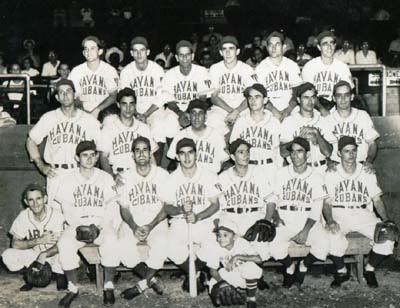Though baseball has always been known as America’s Pastime, it’s connection with the small island nation of Cuba has been so since the late 19th century. As early as the late 1860’s, the role of baseball on the Spanish controlled nation was one of rebellion against the status quo. Where sports such as Bullfighting and Polo were deemed as diversions for the elite, baseball was embraced by the college youth as a mode of resistance against the Imperialist Spanish.
The first Cuban to play professional baseball in the United States was Esteban Bellan, who played for the National Association from the years of 1871-1873. By the early 20th century, two Cubans played for the Cincinnati Reds in 1911: Armando Marsans and Rafael Almeida. What was important to note was that while the “Gentlemen’s Agreement” that kept blacks from playing in the professional baseball leagues was in place, light skinned Cubans were allowed to play. This would prove to be important to future relations between the Major Leagues and Cuba. Also equally important was the man who managed the Cincinnati Reds: Clark Griffith. Griffith, who as the owner of The Washington Senators would employ more Cuban players than the rest of the Major League teams combined.
For many years there were exhibition matched between the Major League teams and the Cuban teams. Very often, the Cuban teams were successful against their American opponents. The relationship between the league and the island expanded within the 30’s and the 50’s with various teams holding Spring Training in Cuba. Most notable was the New York Giants (1937) and The Brooklyn Dodgers (1941, 1942, 1947) who attempted to evade the racial climate of the time with their rookie prospect Jackie Robinson. It wasn’t until 1929 that the idea for bringing professional baseball to Cuba really became a serious option.
With the eventual expansion of the Class B Southeastern League of six to eight teams in the fall of 1929, Havana was chosen to be one of the potential expansion cities. In addition to Havana, Miami was to join the cities of Jacksonville (FL), Tampa (FL), Pensacola (FL), Montgomery (AL), Selma (AL), and Columbus (GA) within the expanded Southeastern League. Though the National Association approved the expansion into Miami and Havana, the National Board of Arbitration refused to make the players fly if they did not want to. Unlike today where travel to and from the above listed cities would be easy via airplane, in 1929, commercial air travel was basically in its beginning stages. Other options would be introduced to facilitate travel to Havana but internal problems within the league would place Havana’s bid in jeopardy.
From the time of the expansion vote in December to the league meeting in February 1930, Miami’s bid was rescinded and St. Petersburg would join the league with Havana. Without having the port of Miami, which is of close distance to Havana, to fly from would cause logistical problems with travel. It was believed that the P&O Steamship Company could be used with their Tampa-Havana route to transport the players and equipment. By March of 1930, the St. Petersburg bid was also rescinded leaving the Havana franchise in jeopardy. Though the league spoke of adding Havana for the 1931 season, the Great Depression hit the league hard causing it to go out of business half way though the 1932 season.
Though the first attempt to add a franchise in Havana was unsuccessful, there would be other attempts where success would be attained. Out next blog post will highlight the Havana Cubans, who would be the First successful Minor League franchise in the Caribbean.
